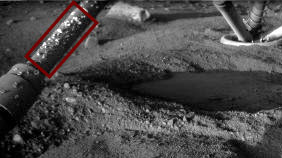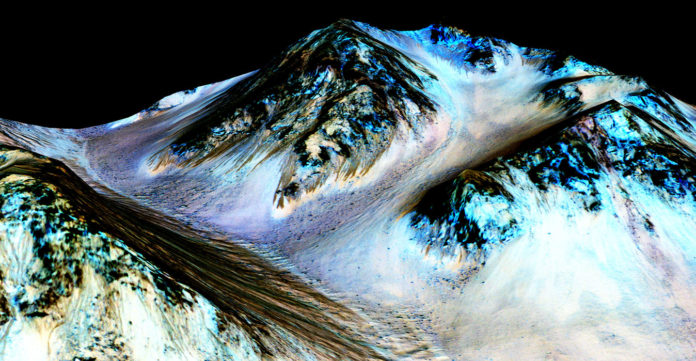Special Regions on Mars are defined as environments able to host liquid water. Those regions simultaneously meet certain temperature and water activity requirements that allow known terrestrial organisms to replicate and thus could be habitable.
To help determine that salty pockets of water present on the Red Planet are likely not habitable by life as we know it on Earth, a Southwest Research Institute scientist modeled the atmosphere of Mars.
Because of Mars’ low temperatures and arid conditions, a droplet of liquid water on its surface would instantly freeze, boil or evaporate, except if the drop had dissolved salts in it. This brine would have a lower freezing temperature and would evaporate more gradually than pure liquid water. Salts are found across Mars, so brines waters could form there.
SwRI’s Dr. Alejandro Soto, a senior research scientist and co-author of the study, said, “Our team looked at specific regions on Mars—areas where liquid water temperature and accessibility limits could allow known terrestrial organisms to replicate—to understand if they could be habitable. We used Martian climate information from both atmospheric models and spacecraft measurements. We developed a model to predict where, when, and for how long brines are stable on the surface and shallow subsurface of Mars.”
Mars’ hyper-arid conditions require lower temperatures to arrive at high relative humidities and middle of the road water activities, which are measures of how effectively the water content might be used for hydration. The most extreme brine temperature expected is – 55 F—at the limit of the hypothetical low-temperature limit forever.

Soto said, “Even extreme life on Earth has its limits, and we found that brine formation from some salts can lead to liquid water over 40% of the Martian surface but only seasonally, during 2% of the Martian year. This would preclude life as we know it.”
While pure liquid water is unstable on the Martian surface, models showed that stable brines could form and persist from the equator to high latitudes on the surface of Mars for a few percent of the year for up to six consecutive hours, a broader range than previously thought. However, the temperatures are well below the lowest temperatures to support life.
“These new results reduce some of the risks of exploring the Red Planet while also contributing to future work on the potential for habitable conditions on Mars.”
Journal Reference:
- Edgard G. Rivera-Valentín, Distribution and habitability of (meta)stable brines on present-day Mars. DOI: 10.1038/s41550-020-1080-9
